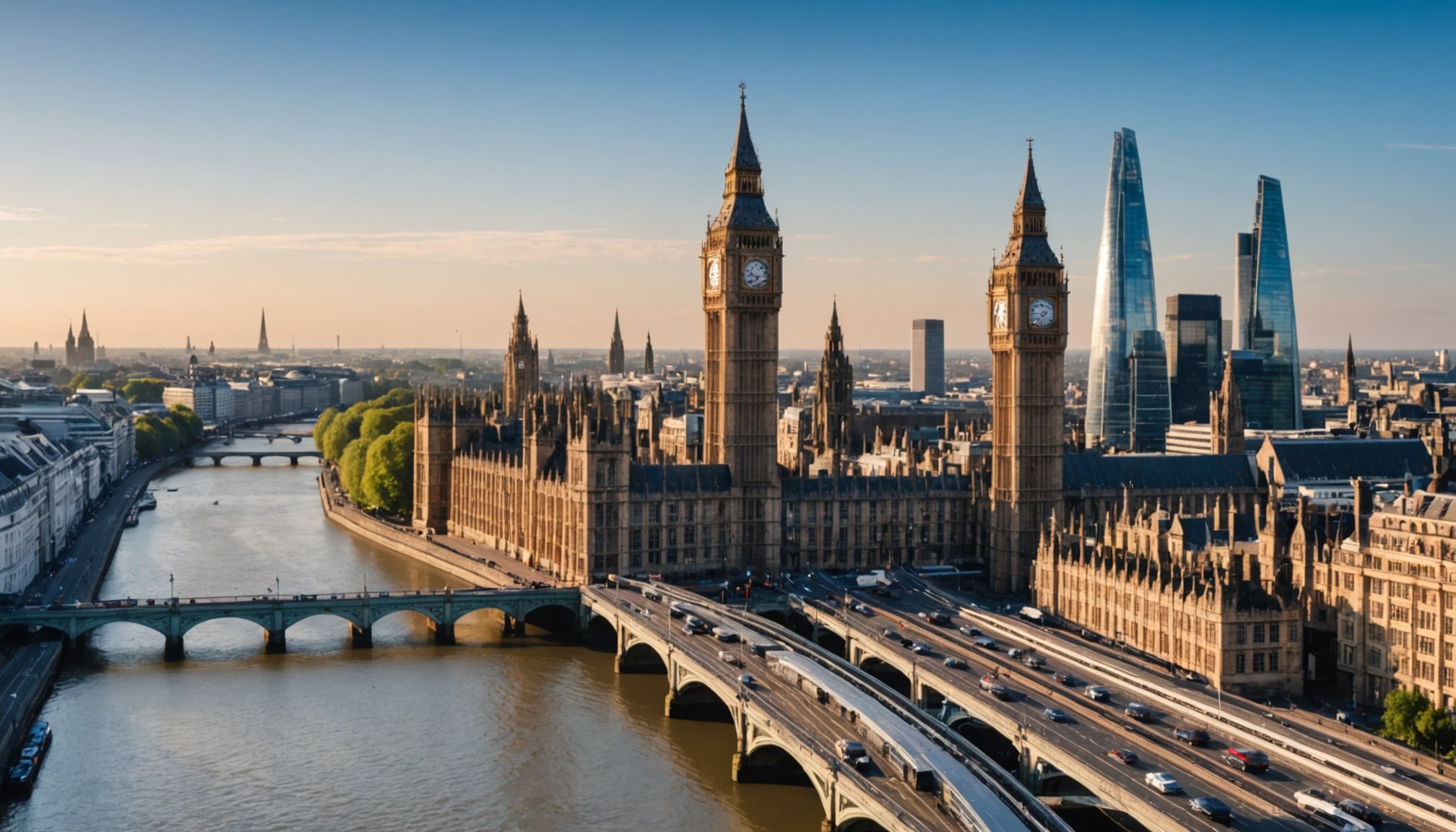Unlocking Long-Term Investment Opportunities: Analyzing UK Properties in Regions with Future Infrastructure Developments to UK’s Infrastructure-Driven Growth
The United Kingdom, with its dynamic economy and strategic infrastructure developments, presents a compelling landscape for long-term investments, particularly in the real estate sector. As the UK government and private sector collaborate on ambitious infrastructure projects, certain regions are poised for significant growth, making them attractive for investors seeking robust returns.
Identifying Key Regions for Investment
When considering investment opportunities in the UK, it is crucial to focus on regions that are undergoing or slated for substantial infrastructure developments. Here are a few key areas that stand out:
Additional reading : Essential Legal Safeguards for UK Renters at Risk of Eviction
Manchester: The Northern Powerhouse
Manchester is at the forefront of the UK’s northern economic revival. With the government’s plans to transform the north into a economic hub, Manchester is experiencing rapid growth. The city is midway through a multi-billion pound regeneration program, enhancing all areas including the city center, airport, and infrastructure. Notable projects include the development of Media City in Salford, which has seen significant investment, including the relocation of the BBC and other major media companies[2].
- Population Growth: Manchester’s population is growing rapidly, with a 149% increase between 2002 and 2015.
- Economic Activity: Over 70% of FTSE 100 companies have a presence in Manchester, along with 50 international banks.
- Infrastructure: The Manchester International Airport is set to receive a £1 billion investment, further boosting the region’s connectivity.
- Student Population: With around 100,000 students in local universities, Manchester is a prime location for rental properties, especially in areas like Deansgate, Piccadilly, and Ancoats.
London: Emerging Neighborhoods
London, despite its high property prices, continues to offer lucrative investment opportunities, especially in emerging neighborhoods. Areas like Barking and Dagenham, and Newham are gaining attention due to their high rental yields and potential for growth.
Also to read : Crafting an Effective Risk Management Strategy for Property Investments in the UK: A Complete Guide
- Barking and Dagenham: This area offers a 5.5% annual yield, with property prices averaging £336,126. The development of new infrastructure and projects is increasing demand for rental properties[1].
- Newham: With a 4.9% annual yield and property prices averaging £573,000, Newham is another promising area. Its central location and growing demand make it an attractive option for young professionals and students[1].
Glasgow: Peripheral Opportunities
Glasgow, Scotland’s largest city, is also a viable investment destination, particularly in its peripheral areas. Recent acquisitions by investment firms like SCPI Iroko Zen highlight the potential of retail parks and commercial properties in these regions.
- Retail Parks: The acquisition of a new retail park in the outskirts of Glasgow, fully leased to prominent brands like Lidl, B&M, Burger King, and Starbucks, demonstrates the attractiveness of such investments. This property offers a 7% yield and a long lease term, ensuring stable income[4].
The Role of Government and Public Sector in Infrastructure Development
The UK government plays a pivotal role in driving infrastructure development through various policies and initiatives. Here are some key aspects:
National Infrastructure Strategy
The UK’s National Infrastructure Strategy aims to deliver long-term economic growth and improve the quality of life for citizens. This strategy includes significant investments in public transport, energy efficiency, and low-carbon infrastructure projects.
- Public Transport: Investments in public transport systems, such as the expansion of rail networks and the development of new bus routes, are crucial for connecting regions and enhancing economic activity.
- Energy Efficiency: Initiatives to improve energy efficiency in buildings and promote low-carbon technologies are part of the government’s plan to achieve net zero emissions by 2050.
- Funding: The government has allocated substantial funding for infrastructure projects, including billions of pounds for transport and energy projects[2].
Local Economic Growth Initiatives
Local governments and regional authorities are also implementing policies to stimulate economic growth in their areas. These initiatives often include:
- Industrial Strategy: Focus on developing specific industrial sectors, such as life sciences and advanced manufacturing, to create jobs and attract private investment.
- Planning Policy: Streamlined planning processes to facilitate the development of new infrastructure and housing projects.
- Public-Private Partnerships: Collaborations between the public and private sectors to fund and deliver infrastructure projects, ensuring both sectors benefit from the growth.
Private Sector Investment and Collaboration
Private sector investment is crucial for the success of infrastructure projects. Here’s how private investors are contributing:
Private Investment in Real Estate
Private investment firms are actively acquiring and developing properties in regions with promising infrastructure growth. For example:
- SCPI Iroko Zen: This firm has acquired a retail park in Glasgow, highlighting the potential for commercial properties in peripheral areas. Such investments offer attractive yields and stable income due to long-term leases with reputable tenants[4].
Industrial and Commercial Developments
Private investors are also focusing on industrial and commercial developments, particularly in areas with growing economic activity.
- Manchester’s Media City: The development of Media City has attracted significant private investment, transforming the area into a media and digital hub[2].
- London’s Emerging Neighborhoods: Private developers are investing heavily in areas like Barking and Dagenham, and Newham, driven by the potential for high rental yields and capital appreciation[1].
Practical Insights and Actionable Advice for Investors
For those considering investing in UK properties, here are some practical insights and actionable advice:
Conduct Thorough Research
- Understand Local Market Trends: Research the local real estate market to identify areas with potential for growth.
- Evaluate Infrastructure Projects: Assess the impact of upcoming infrastructure projects on property values and rental yields.
Diversify Your Portfolio
- Geographical Diversification: Invest in different regions to spread risk and capitalize on various growth opportunities.
- Sector Diversification: Consider investing in different types of properties, such as residential, commercial, and industrial, to diversify your portfolio.
Engage with Local Authorities
- Stay Updated on Policy Changes: Keep informed about local and national policies that could affect property values and rental yields.
- Participate in Public Consultations: Engage with local authorities during public consultations to understand and influence infrastructure development plans.
Comparative Analysis of Key Regions
Here is a comparative table highlighting some of the key regions discussed:
| Region | Average Property Price | Rental Yield | Infrastructure Developments | Population Growth |
|---|---|---|---|---|
| Manchester | £200,000 – £300,000 | 4% – 6% | Media City, Airport Expansion, Public Transport Enhancements | 149% (2002-2015) |
| Barking and Dagenham | £336,126 | 5.5% | New Infrastructure and Development Projects | Steady |
| Newham | £573,000 | 4.9% | Central Location, Growing Demand | Steady |
| Glasgow (Periphery) | £150,000 – £250,000 | 7% | Retail Parks, Commercial Developments | Steady |
Investing in UK properties, particularly in regions with significant infrastructure developments, offers a promising path to long-term growth and returns. By understanding the role of government policies, private sector investments, and local economic initiatives, investors can make informed decisions that align with their investment strategies.
As Manchester continues to emerge as a northern powerhouse, and London’s emerging neighborhoods attract new investors, Glasgow’s peripheral areas also present compelling opportunities. The key to successful investment lies in thorough research, diversification, and engagement with local authorities.
In the words of a real estate investor, “The UK’s infrastructure development plans are a game-changer for real estate investments. By focusing on regions with significant growth potential, investors can capitalize on the country’s economic resurgence and achieve substantial returns over the long term.”
Footnote
For those interested in delving deeper into the specifics of each region and the broader economic context, here are some additional resources:
- Hometrack Reports: Detailed analyses of property market trends and infrastructure impacts.
- Government Policy Documents: Official publications outlining national and local infrastructure strategies.
- Local Authority Websites: Resources providing updates on public consultations and infrastructure development plans.
By leveraging these resources and staying informed, investors can unlock the full potential of their investments in the UK’s dynamic real estate market.











